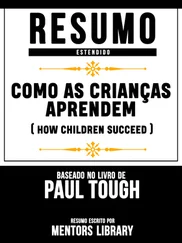One of the best strategies for raising your rates is to look for clients who themselves earn a healthy income, or orient yourself toward higher-earning specializations. Not surprisingly, business sectors that are big earners in the U.S., such as law, financial services and pharmaceuticals, are correspondingly well-paying for translators who work in those areas. So, part of the key to raising your rates is to find clients who can pay what you’d like to earn, and show these clients that your services will help their business run faster, more effectively, or more profitably.
13.2 Six figures: increasingly doable?
Lately I’ve noticed a very positive trend in our industry—that of the freelance translator earning over US $100,000 per year. Anecdotally, I’ve talked to more and more translators in the past few years who are at the six-figure mark or the part-time equivalent, and a few who are well over that mark. Here, I’m talking about a) people who make the bulk of their income directly from translation, not from markups on subcontracting, and b) gross income, not net. From my unscientific research, here are a few observations on what it takes to earn more than $100K per year as a freelancer.
First, I think that six-figure translators are actually a very diverse bunch. Some charge extremely high rates, some make very efficient use of technology like CAT tools and speech recognition, some work very long hours. So, I think it’s important to realize that there are a number of paths to $100K—it’s not all people working in a certain language or living in a certain place.
Next, I think that in order to reach six figures, there are a couple of non-negotiables: being very, very good at what you do, having a targeted specialization or working in a niche language, charging higher than average rates, and being a businessperson/translator rather than a translator/businessperson. For example, the average full-time freelancer might translate 400,000–600,000 words per year. If you charge 10 cents a word, you have to translate almost double that amount to reach six figures. But at 20 cents a word, 100K starts to look much more doable. So, although not everyone making six figures is charging very high rates (which I would define as 35–40 cents a word and up—and yes, there are people out there who are commanding those rates!), I would say that if you are not averaging at least 15 cents a word, you would have to work very long hours or very, very efficiently to reach six figures. But as an example, if you charge 15 cents per word and translate 500 words per hour, that’s $75 an hour; if you have clients who send you a steady flow of work at that rate, you can realistically bill 30 hours a week, so that’s $2,250 a week. Even if you take a healthy six weeks of vacation, you’re still over $100K. So this isn’t to say that it’s an easy bar to reach, but it’s doable if you’re at the higher end of the agency market, or in the direct client market.
Six-figure translators are rarely, if ever, generalists. I think that the exception to this rule is people who work in languages where the pool of translators is small enough that people don’t tend to specialize. Partially, I think that this results from the fact that specialization is the key to attracting direct clients, and very few agencies in the U.S. are willingly going to pay 20+ cents per word for common languages; if you break the $100K mark, you are probably working with at least some direct clients.
Surprisingly, the six-figure translators I’ve met are not the over-caffeinated stress machines that one might imagine. Rather, they seem to love their work and be happy that they have coincidentally found a way to make what one of them described as “a ton of money” doing it. Six-figure translators also talk about money a lot. While I’m sure that no one is going to attend a translation event and broadcast the fact that they charge five cents a word, I do think that willingness to talk about rates is a good tool for setting/raising your rates; when you meet someone who is as busy as they want to be at double what you’re charging, it is a good incentive to push your own rates up.
13.3 Reviewing your own performance
One of the challenges of working as a freelancer is that of working in a fairly isolated environment and getting very little feedback on your work. This can make it difficult to know what you are doing well and where you need to improve; even if you ask your clients for feedback, they may not have time or be willing to give you the kinds of details you’re looking for. Here are a few suggestions for giving yourself a performance review:
• Your clients may or may not be willing to give you helpful feedback, but it’s certainly worth asking. Especially when you work for a new client, ask if there is anything you can do to better meet their needs and whether they have any comments on your work. If you have the time and inclination, you could even set up a client survey using a service such as Survey Monkey surveymonkey.com so that your clients can respond anonymously.
• Establish some objective performance metrics for yourself. For example, track the percentage of your work that comes from repeat clients, the percentage of your work that comes from agencies versus direct clients, and the percentage of your project quotes that materialize into projects.
• Set specific performance goals for each quarter or year. For example, you might want to find at least one new direct client, pursue translator certification, or attend a certain number of days of professional development trainings.
• When colleagues edit your work, always ask to see the edited translations. Use these corrections to improve your future translations.
• When you identify areas in which you need to improve, make a specific plan to reach your new goal. Rather than setting an amorphous target like “Earn more money this year,” break down your goal into at least three sub-goals or specific steps, such as “Raise rates 10% with existing clients; increase direct client work by at least 25%; market more consistently to avoid lulls.”
Giving yourself an annual or twice-yearly performance review is an excellent way to keep yourself focused on your professional goals. Better yet, ask a colleague to do a performance review trade with you—write up your evaluation criteria and go over them together!
13.4 Giving yourself a promotion
Another major difference between freelancing and working as an employee is that you are entirely in control of what work you take on. Without a boss to assign projects to you, you can accept or decline any work that you want. So, remember to occasionally review the kinds of work you are doing and your level of satisfaction with that work.
After a few years of freelancing, you may want to “promote yourself” into doing different kinds of work. You might want to start doing more direct client work, or more editing instead of translation, or more work in a different specialization. Promoting yourself can help you stay excited about your job and can motivate you to learn new skills. Don’t allow yourself to stagnate as a freelancer—just as you would be likely to change jobs or be promoted within a company every few years, give yourself a chance to grow professionally by evaluating the scope of your freelance work on a regular basis.
14 Basic translation techniques
Translation technique varies quite a bit depending on your language pairs and specializations. In addition, it’s hard to cover translation technique in just one chapter of a book. There are many excellent books and courses that can help you become a better translator; let’s take a look at some of the fundamentals of producing good translations.
Читать дальше
![Коринн МакКей How to Succeed as a Freelance Translator [calibre 3.46.0] обложка книги](/books/402693/korinn-makkej-how-to-succeed-as-a-freelance-transl-cover.webp)


![Джон Ирвинг - Našlė vieneriems metams [calibre]](/books/384320/dzhon-irving-naŠle-vieneriems-metams-calibre-thumb.webp)
![Джонатан Димблби - Barbarossa - How Hitler Lost the War [calibre]](/books/385421/dzhonatan-dimblbi-barbarossa-how-hitler-lost-the-w-thumb.webp)







